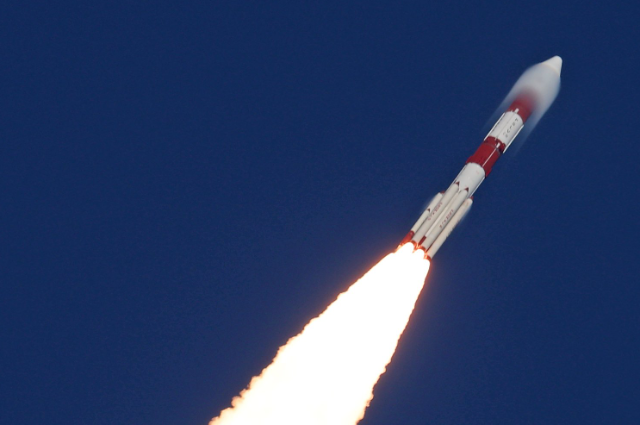The Indian Space Research Organization (ISRO) is preparing to launch its PSLV-C59/PROBA-3 mission at 4:04 p.m. This mission is significant as it will be conducted using the PSLV-C59 rocket, which will place the spacecraft into a highly elliptical orbit. The launch is part of a dedicated commercial effort by NewSpace India Limited (NSIL) to showcase India's growing capabilities in space technology.
Delay in Launch
Originally scheduled for 4th December the launch was postponed due to an irregularity detected in the PROBA-3 spacecraft. Such delays are not uncommon in space missions, as ensuring the safety and functionality of the equipment is important. On the day of the rescheduled launch, light rain was observed in the city, adding to the atmosphere of anticipation surrounding this important event.
Collaboration and Innovation
The PSLV-C59 mission represents a collaborative effort between ISRO and NewSpace India Limited (NSIL). This partnership highlights India's commitment to advancing its space exploration initiatives through innovative technologies and commercial ventures.
Proba-3 itself is a pioneering technology demonstration mission led by the European Space Agency (ESA). It holds the distinction of being both ESA's first precision formation-flying mission and the first of its kind globally. The mission involves two satellites that will fly closely together by maintaining a fixed formation as if they were one large, rigid structure in space. This innovative approach aims to demonstrate advanced formation flying and rendezvous technologies which could have significant implications for future space missions.
As ISRO prepares for this crucial launch, it emphasizes not only India's advancements in space technology but also its collaborative efforts with international partners to push the boundaries of what is possible in space exploration.
ESA's Proba-3 Mission: Pioneering Formation Flying and Solar Exploration
The European Space Agency (ESA) has unveiled its ambitious Proba-3 mission, designed to demonstrate the capabilities of formation flying in a scientific context. Central to this mission are two satellites that will work together as a 150-meter-long solar coronagraph. This advanced setup aims to study the Sun’s faint corona, venturing closer to the solar rim than ever achieved before.
Precision and Innovation in Spacecraft Positioning
Beyond its scientific objectives, the Proba-3 mission also serves as a platform to showcase precise spacecraft positioning. Achieving and maintaining the exact alignment of these satellites requires cutting-edge technology. The mission incorporates a collection of new advancements by making it a benchmark for future space endeavours.
An Orbital Laboratory: Testing Advanced Space Operations
Proba-3 will act as an orbital laboratory, advancing multiple space technologies and techniques. The mission will test critical capabilities such as acquisition, rendezvous, proximity operations, and formation flying. It will also validate the use of innovative metrology sensors and control algorithms by introducing new possibilities for mission control in space exploration.
In space, the two Proba-3 satellites will maintain a fixed configuration, separated by 150 meters. Positioned in perfect alignment with the Sun, one satellite, the Occulter Spacecraft (OSC), will block the Sun's bright disk. This will allow the other satellite, the Coronagraph Spacecraft (CSC), to observe the Sun's faded corona continuously. The innovative design provides an unprecedented opportunity for scientists to study the Sun's surrounding atmosphere.
The Role of PSLV-C59 in the Mission
The Indian Space Research Organisation (ISRO) is collaborating on this groundbreaking project. On December 5, 2024, ISRO's PSLV-C59 rocket will launch the Proba-3 satellites into orbit. The launch countdown has already begun, as ISRO announced on social media.
Shaping the Future of Space Exploration
The Proba-3 mission not only pushes the boundaries of solar research but also demonstrates the potential of formation flying as a game-changing technology for space missions. Through this endeavour, ESA and ISRO are paving the way for more precise, innovative, and collaborative approaches to unravelling the mysteries of our universe.
ISRO's Upcoming Mission Rescheduled: A Step Closer to History
Launch Announcement and Rescheduling
The Indian Space Research Organisation (ISRO) has rescheduled the launch of its much-anticipated PSLV-C59/PROBA-3 mission. This update was shared through a post on the social media platform X (formerly Twitter), emphasizing the importance of the revised timeline. According to the announcement, the new launch date is set for December 5, 2024, at 16:04 IST, from the Satish Dhawan Space Centre (SDSC) in Sriharikota.
ISRO assured its audience of timely updates about the countdown and key milestones leading up to the launch. This level of communication not only keeps enthusiasts engaged but also highlights the organization's transparency in managing such significant missions.
The PSLV-C59 Launch Vehicle
The Polar Satellite Launch Vehicle (PSLV-C59) is the workhorse for this mission. Designed in four stages, it showcases ISRO's advanced engineering and precision. The rocket with a liftoff mass of approximately 320 tonnes, is expected to successfully transport its payload into orbit, a task that underscores its robust capacity.
The PROBA-3 Mission: An ESA Collaboration
The PROBA-3 mission, developed by the European Space Agency (ESA), is a sophisticated In-Orbit Demonstration (IOD) initiative. This mission aims to test and showcase innovative technologies and systems in space. Its inclusion in the PSLV-C59 mission reflects ISRO's growing role in international space collaborations, reinforcing its reputation as a reliable and capable partner for global space endeavors.
As the revised date approaches, the PSLV-C59/PROBA-3 mission carries immense expectations. This launch not only adds to ISRO's legacy of achievements but also strengthens global ties in space research and exploration. For those following this historic event, the countdown has begun, promising a momentous occasion in space science.
. . .
References:

